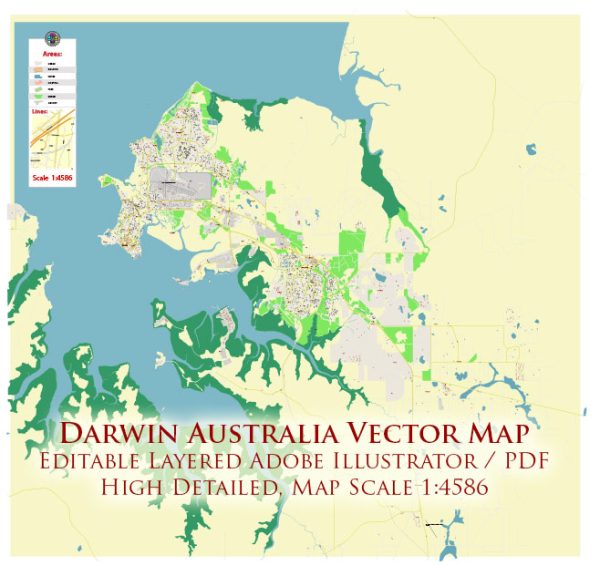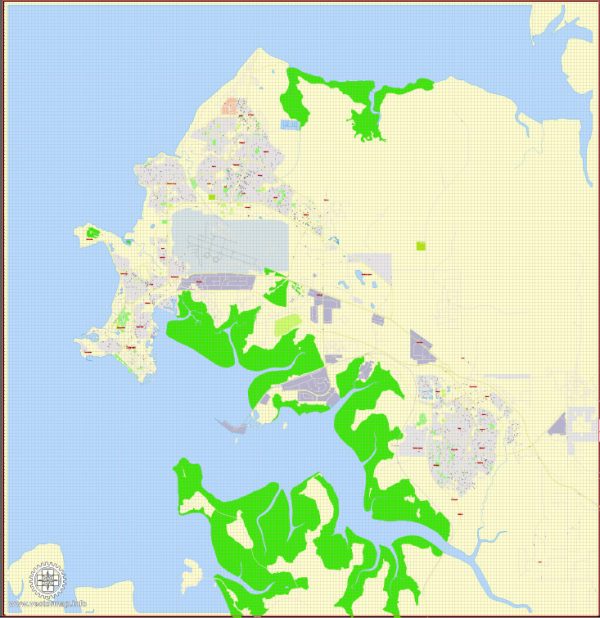Printable Map Darwin, Australia, exact vector street map, V17.11, fully editable, Adobe Illustrator, G-View Level 17 (100 meters scale), full vector, scalable, editable, text format of street names, 2 Mb ZIP.
All streets named, NO buildings, main objects. Map for publishing, design, printing, publications, arts, projects, presentations, for architects, designers and builders, business, logistics. The most exact and detailed map of the city.
Separated layers: streets and roads, color fills, road labels, street arrows, objects, names 1,2,3, scales. Royalty Free.
DWG, DXF, CDR and other formats – by request, same price, please contact.
Darwin, Australia.
This vector map of Darwin city is used as a basis for design, editing, and further printing.
This is the most detailed, exact map of Darwin city for high-quality printing and polygraphy. You can always clarify the map development date by contacting us.
For your convenience, all objects on Darwin vector city map are divided into layers. And the editing is very easy – colors, lines, etc.
You can easily add any objects needed (e.g. shops, salons, sale points, gas station or attraction) on any layer of Darwin vector map.
Darwin is the capital city of the Northern Territory of Australia. Situated on the Timor Sea, Darwin is the largest city in the sparsely populated Northern Territory, with a population of 145,916. It is the smallest and most northerly of the Australian capital cities, and acts as the Top End’s regional centre.
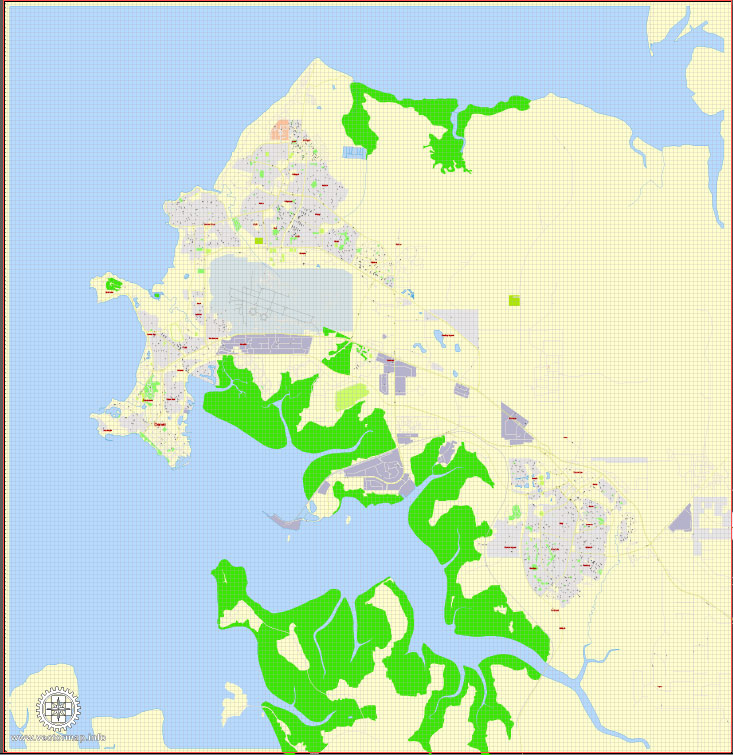
One of the advantages of Darwin city vector maps of our production is the relevance of cartographic data, we constantly update all our products.
This vector map of Darwin city is used by:
designers, layout designers, printers, advertisers and architects. Our product – vector maps – is designed for further editing and printing in large formats – from @Wall format (a few meters) to A-0 and A-1, A-2, A-3.
The Darwin city map in vector format is used for design, urban planning, presentations and media visualizations.
The advertising and presentation map of Darwin city (usually the final designer marks the routes, and puts the client’s objects (shops, saloons, gas stations etc.)
The undoubted advantage is that people will NEVER throw out this advertising product – the map. In fact, as an advertising medium, a city map is the most “long-playing” of the well-known polygraphic advertising media, with the longest lifespan, and the maximum number of interactions with the customer.
Darwin’s proximity to South East Asia makes it a link between Australia and countries such as Indonesia and East Timor. The Stuart Highway begins in Darwin, extends southerly across central Australia through Tennant Creek and Alice Springs, concluding in Port Augusta in South Australia. The city itself is built upon a low bluff overlooking the harbour. Its suburbs spread out over some area, beginning at Lee Point in the north and stretching to Berrimah in the east. Past Berrimah, the Stuart Highway goes on to Darwin’s satellite city, Palmerston, and its suburbs.
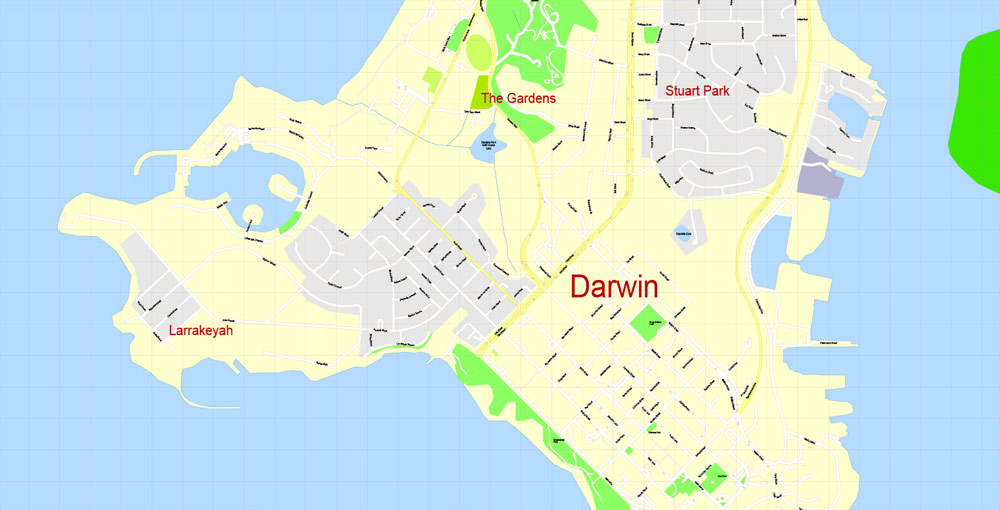
For travelers, maps are sold at the airports and gas stations around the world. Often the source is our vector maps.
Take a look, who purchases our vector maps of Darwin city in “Our Clients and Friends” page – these are large and small companies, from super-brands like Volvo and Starbucks, to small design studios and printing houses.
It’s very easy to work with vector maps of Darwin city, even for a not very experienced designer who can turn on and off the map layers, add new objects, change the colors of fill and lines according to customer requirements.
The undoubted advantage of Darwin city vector maps in printing is an excellent and detailed visualization, when customer can expand a large paper map and instantly define his location, find a landmark, an object or address on map, unlike using the popular electronic formats of Google and Yandex maps for example.
Printable vector maps of Darwin city are much more convenient and efficient than any electronic maps on your smartphone, because ALL DETAILS are displayed in the entire space of Darwin city map.
The Darwin region, like much of the Top End, experiences a tropical climate with a wet and dry season. Approximately 6-8 weeks leading up to Darwin’s wet season, a period known locally as “the build up” sees temperature and humidity both increase. Darwin’s wet season typically arrives in late November-early December and brings with it heavy monsoonal downpours, spectacular lightning displays and increased cyclone activity. During the dry season, the city is met with clear skies and mild sea breezes from the harbour.
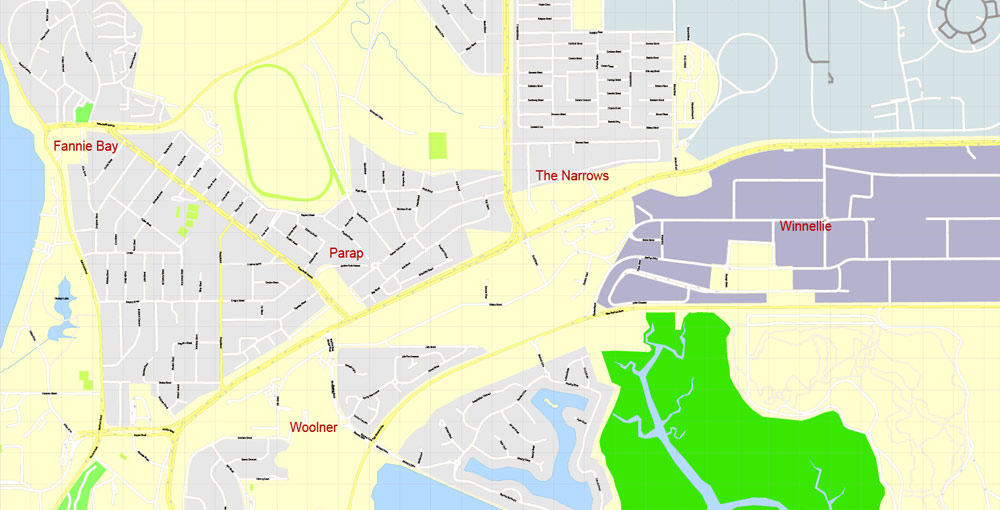
Useful tips on working with vector maps of cities and countries in Adobe Illustrator.
«V» – launches the Selection tool (cursor, black arrow), which makes active any vector line.
«А» – launches the Direct Selection tool (white cursor), allows you to select curve elements and drag them to the desired place.
«R» – activates the Rotate tool, which helps you rotating selected objects around the center point by 360 degrees.
«E» – gives you the opportunity to use the Eraser tool and erase unnecessary parts.
«X» – switches between Fill and Stroke in the Tools section. Try to get used to this hot key and
you will quickly understand that you can’t live and work without it.
Guides are not limited to vertical and horizontal in Adobe Illustrator. You can also create a diagonal guide for example. Moreover, you can turn any contours into guides. Select the outline and go to View > Guides > Make Guides (Create Guides), or simply press Cmd/Ctrl + 5. You can also turn the guides back into an editable object. Go to menu, View > Guides > Unlock Guides (Release Guides), select the guide you want to edit and select View > Guides > Release Guides (Reset Guides), or just press Cmd/Ctrl + Option / Alt + 5).
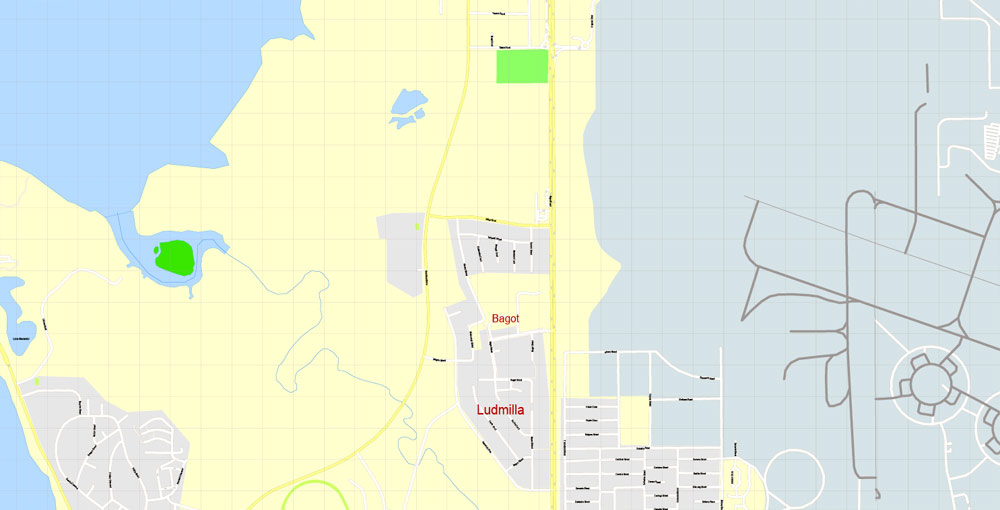
You will probably want to change the color scheme used on our Darwin vector city map.
To quickly and effectively play with colors.
Of course, you can do it manually, all objects in our Darwin city vector map are divided according to types and layers, and you can easily change the color gamma of vector objects in groups and layers.
But there is more effective way of working with the whole VECTOR MAP of Darwin city and all layers:
The overview dialog «Edit colors»/«Repaint Graphic Object» (this dialog box name can change depending on the context):
If you have selected a part or a layer of Darwin city vector map and open the dialog box by clicking the icon in the Control panel, on the Samples palette or the Color Catalog, or if you choose Edit > Edit Colors> Repaint Graphic Object, then the «Repaint Graphic Object» dialog box appears, and you get access to «Assign» and «Edit» tabs.
The greater Darwin area is the ancestral home of the Larrakia people. On 9 September 1839, HMS Beagle sailed into Darwin harbour during its surveying of the area. John Clements Wickham named the region “Port Darwin” in honour of their former shipmate Charles Darwin, who had sailed with them on the ship’s previous voyage which had ended in October 1836. The settlement there became the town of Palmerston in 1869, however was later renamed Darwin in 1911. The city has been almost entirely rebuilt four times, following devastation caused by the 1897 cyclone, the 1937 cyclone, Japanese air raids during World War II, and Cyclone Tracy in 1974.
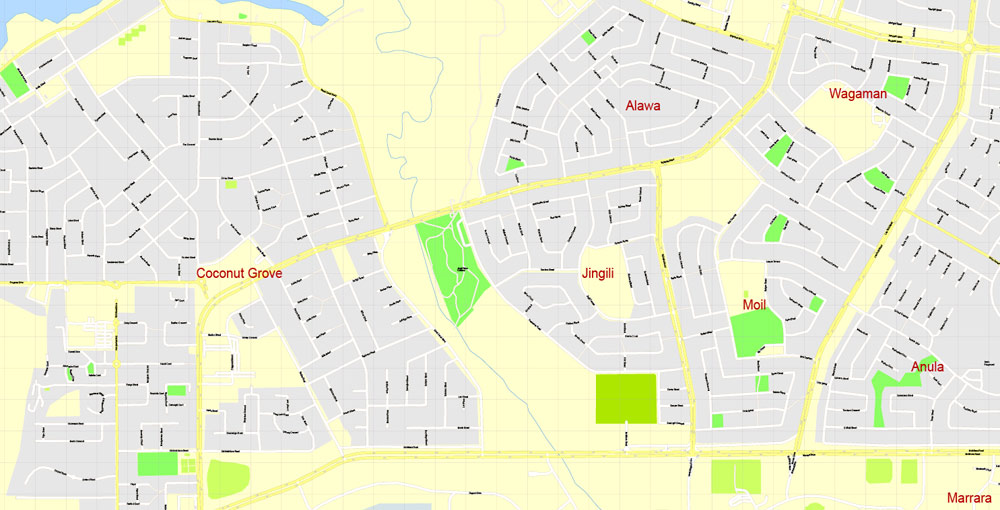
If a picture or a map fragment is not selected, and you open the dialog box by clicking the icon in the Control panel, on the Samples palette or in the Color Catalog, the «Edit Colors» dialog box appears and you can only access the «Edit» tab.
Regardless of the name at the top of the dialog box, the right-hand side always displays the color group of the current document, as well as two default color groups: Print Color and Grayscale. These color groups can be selected and used any time.
Create and edit color groups of Darwin city vector map, and also assign colors using the «Edit Colors»/ а «Repaint Graphic Object» dialog box.
A. Creating and editing of a color group on the «Edit» tab
B. Assigning colors on the «Assign» tab
C. Select a group of colors from the «Color groups» list
The option «Repaint a graphic object» in the lower part of the dialog box allows you to preview the colors on a selected layer of Vector map, or a group of elements, and specify whether its colors will be redefined when the dialog box is closed.
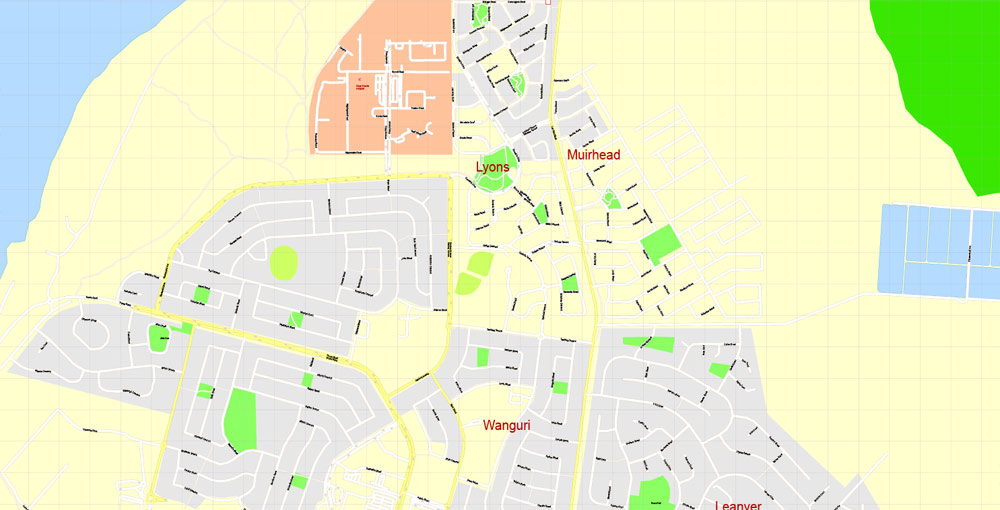
The main areas of the dialog box are:
«Edit»
The «Edit» tab is designed to create a new or edit the existing color groups.
The harmony rules Menu and the Color Wheel are used to conduct experiments with color harmonies. The color wheel shows how colors are related in color harmony, and the color bars allow you to view and manipulate an individual color values. In addition, you can adjust the brightness, add and remove colors, save color groups and view colors on the selected Vector Map of Darwin city or a separated layers.
«Assign»
The «Assign» tab is used to view and control on how the original colors are replaced with colors from the color group like your corporate colors in the Vector Map of Darwin city.
The assign color ability is provided only if the entire map, layer or fragment is selected in the document. You can specify which of new colors replace the current colors, whether the spot colors should be preserved and how colors are replaced (for example, you can replace colors completely or changing the color tone while maintaining the brightness). The «Assign» tab allows you to redefine colors in the Vector Map of Darwin city, or in separate layers and fragments using the current color group or reducing the number of colors in the current Vector Map.
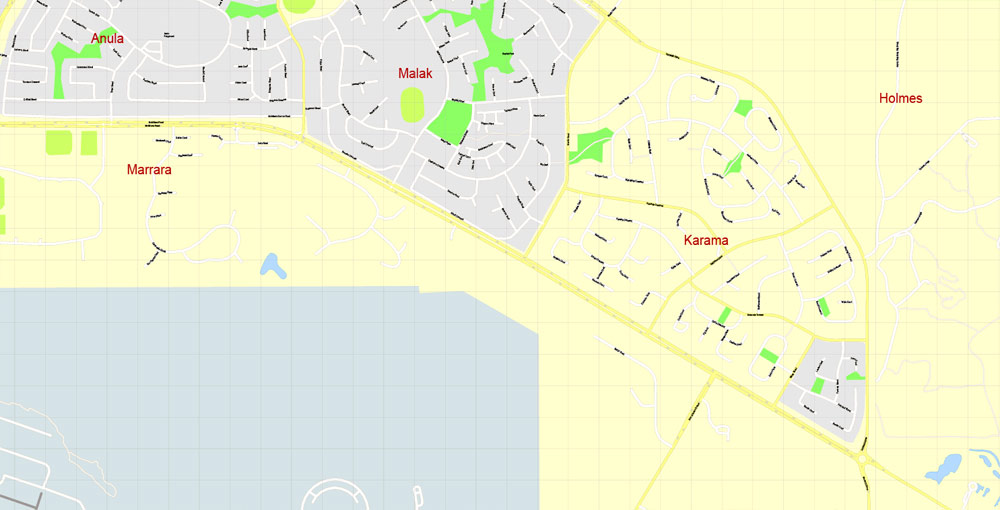
Color groups
Is a list of all saved color groups for current document (the same groups appear in the «Samples» palette). You can edit and delete the existing color groups, as well as creating a new ones using the list of “Color Groups” in the dialog box. All changes appear in the «Samples» palette.
The highlighted color group shows, which color group is currently edited.
Any color group can be selected and edited, or used to redefine the colors in the selected vector map of Darwin city, its fragments or elements.
Saving a color group adds this group to the specified list.
Opening the «Edit Colors»/«Repaint Graphic Object» dialog box.
Open the «Edit Colors»/«Repaint Graphic Object» dialog box using one of the following methods:
«Edit»> «Edit Colors»> «Repaint Graphic object» or «Repaint With Style».
Use these commands if you need to edit the colors in the selected vector map of Darwin city.
«Repaint Graphic object» button on the «Control» panel.
Use this button if you need to adjust colors of Darwin city vector map using the а «Repaint graphic object» dialog box.
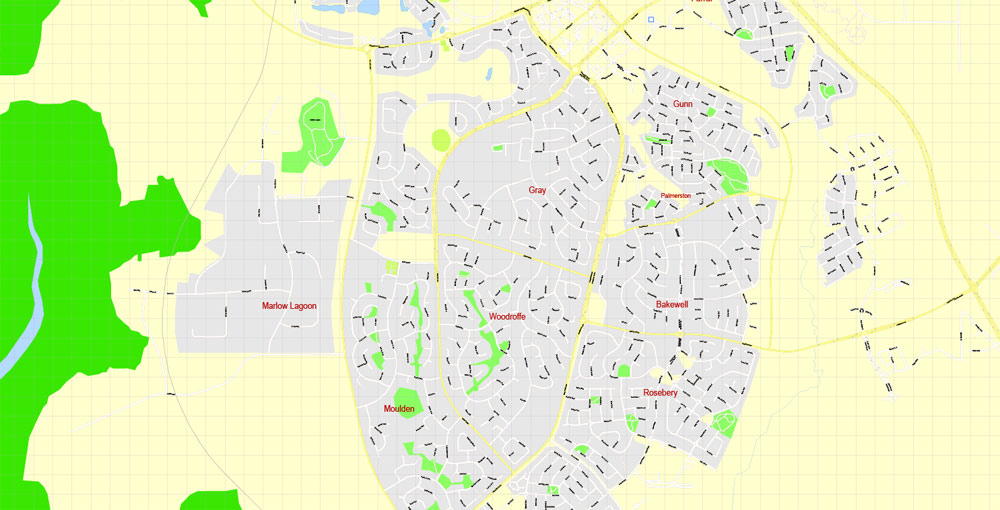
The specified button is available if the selected vector map or its fragment contains two or more colors.
Note. This color editing method is convenient for global color adjustment in a vector map, if global colors were not used when creating a City Map of Darwin.
The «Edit colors» button or «Edit or apply colors» on the «Color Catalog» palette
Click this button if you need to edit colors on the «Color Catalog» palette or edit and then apply them to the selected Vector Map of Darwin city or its fragment.
The «Edit color group» button or «Edit or apply color group» on the «Samples» palette.
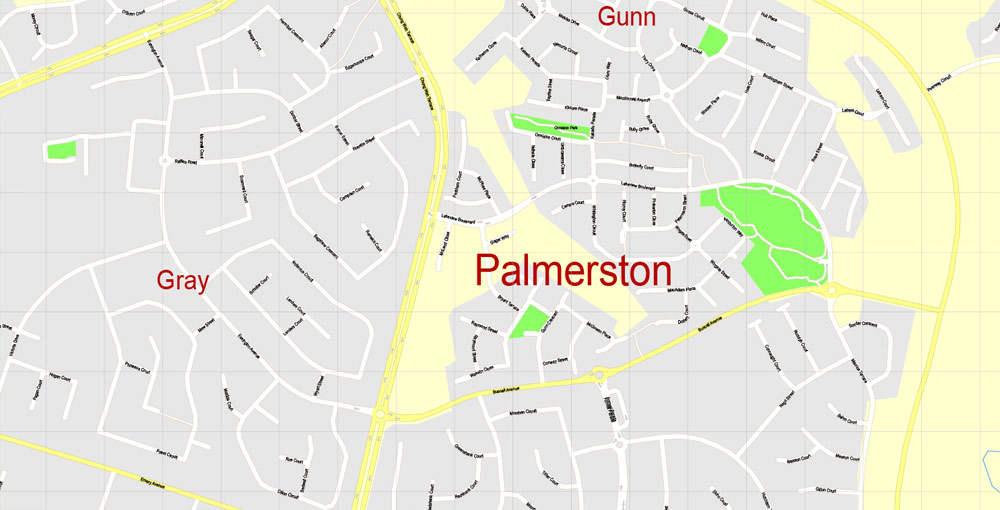
Click this button if you need to edit the colors in the specific color group or edit and apply them to the selected Vector Map of Darwin city or a group of its elements, for example, the whole layer “Streets and lines”. You can also double-click the color group in the Samples panel to open the dialog box.
If the map file is too large and your computer freezes or even can’t open it quickly:
1. Try to reduce the color resolution of the video card (display) to 256 colors while working with a large map.
2. Using Windows Task Manager, select all the application you don’t need, while working with map, just turn them off.
3. Launch Adobe Illustrator. (DO NOT OPEN the vector map file)
4. Start the Windows Task Manager using administrator rights > Find the “Illustrator” process > set the «real time» priority,
5. Open the file. When you see the LEGACY FONT popup window – click “OK” (do not update). You can restore the TEXT later.
6. Can also be useful: When file is opened – Edit > Settings > Basic Settings > disable smoothing. /// It looks scary, but works quickly)))
We recommend saving the file in Adobe Illustrator 10 version. It’s much more stable when working with VERY BIG size files.
Geography
Darwin lies in the Northern Territory, on the Timor Sea. The city proper occupies a low bluff overlooking Darwin Harbour, flanked by Frances Bay to the east and Cullen Bay to the west. The remainder of the city is flat and low-lying, and coastal areas are home to recreational reserves, extensive beaches, and excellent fishing.
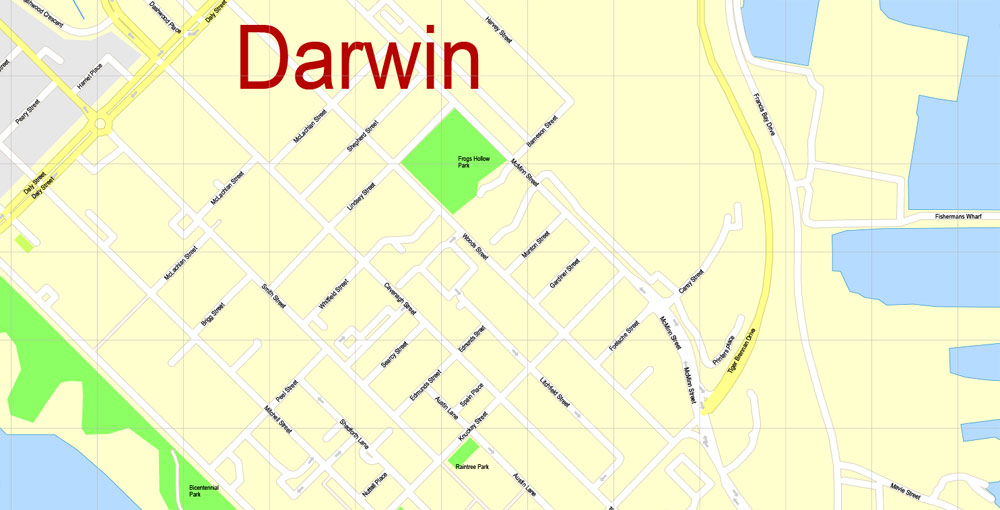
Darwin is closer to the capitals of five other countries than to the capital of Australia: Darwin is 3,137 kilometres (1,949 mi) away from Canberra. Dili (East Timor) is 656 km (408 mi), Port Moresby (Papua New Guinea) is 1,818 km (1,130 mi), Jakarta (Indonesia) is 2,700 km (1,678 mi), Bandar Seri Begawan (Brunei) is 2,607 km (1,620 mi), and Ngerulmud (Palau) is 2,247 km (1,396 mi) from Darwin.
Even Malaysia and Singapore are only slightly farther away at 3,350 km (2,082 mi), as is Manila (Philippines) at 3,206 km (1,992 mi), and Honiara (Solomon Islands) at 3,198 km (1,987 mi). Ambon, Indonesia, is only 881 km (547 mi) away from Darwin.
Along with its importance as a gateway to Asia, Darwin also acts as an access point for the Kakadu National Park, Arnhem Land, and northerly islands such as Groote Eylandt and the Tiwi Islands. As the largest city in the area, it provides services for these remote settlements.
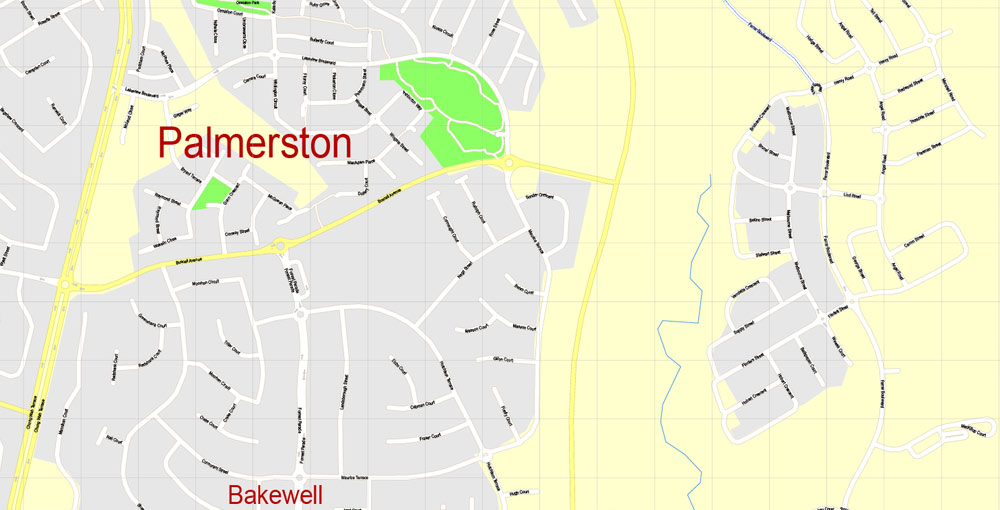
City and suburbs
Darwin and its suburbs spread in an approximately triangular shape, with the older south-western suburbs—and the city itself—forming one corner, the newer northern suburbs another, and the eastern suburbs, progressing towards Palmerston, forming the third.
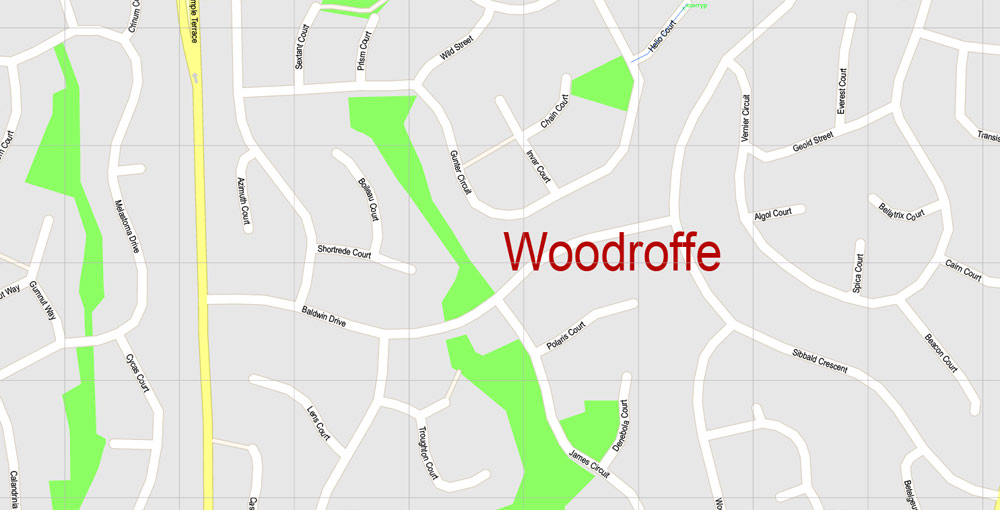
The older part of Darwin is separated from the newer northern suburbs by Darwin International Airport and RAAF Base Darwin. Palmerston is a satellite city 20 km (12 mi) east of Darwin that was established in the 1980s and is one of the fastest growing municipalities in Australia. The rural areas of Darwin including Howard Springs, Humpty Doo and Berry Springs are experiencing strong growth.
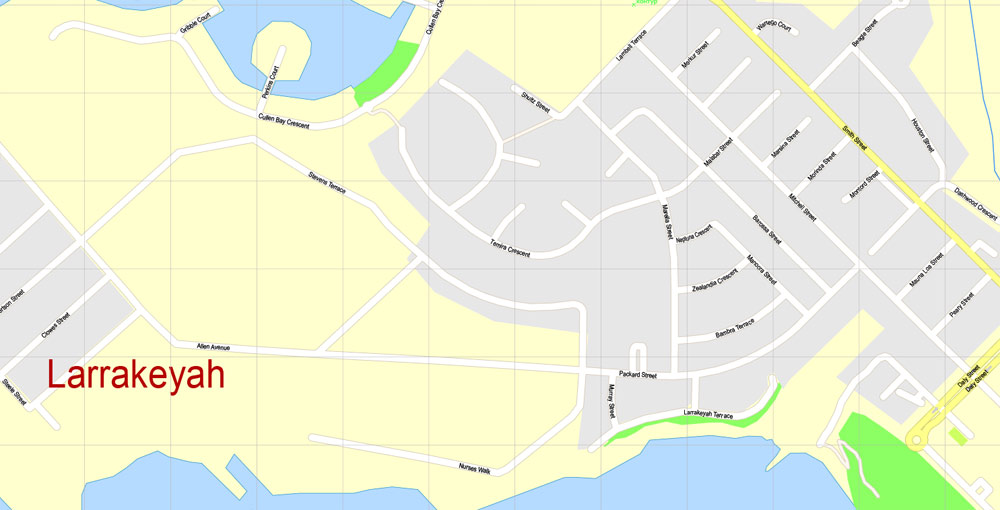
Darwin’s central business district is bounded by Daly Street in the north-west, McMinn Street in the north-east, Mitchell Street on the south-west and Bennett Street on the south-east. The CBD has been the focus of a number of major projects, including the billion dollar redevelopment of the Stokes Hill wharf waterfront area including a convention centre with seating for 1500 people and approximately 4,000 square metres (43,000 sq ft) of exhibition space. The development will also include hotels, residential apartments and public space. The city’s main industrial areas are along the Stuart Highway going towards Palmerston, centred on Winnellie. The largest shopping precinct in the area is Casuarina Square.
The most expensive residential areas stand along the coast in suburbs such as the marina of Cullen Bay part of Larrakeyah, Bayview and Brinkin, despite the risk these low-lying regions face during cyclones and higher tides, adequate drainage and stringent building regulations have reduced the potential damage to buildings or injury to residents. The inner northern suburbs of Millner and Coconut Grove and the eastern suburb of Karama are home to lower-income households, although low-income Territory Housing units are scattered throughout the metropolitan area. The suburb of Lyons was part of a multi-stage land release and development in the Northern Suburbs; planning, development and construction took place from 2004 to 2009 and eventually became home to a number of affluent Darwin residents and local/recently posted military families above the rank of Sergeant or Flying Officer. More recent developments near Lyons subdivision includes the suburb of Muirhead.
Free download vector map Australia, Adobe Illustrator, download now Free maps vector clipart >>>>>
Map for design, projects, presentation free to use as you like.
Share it!
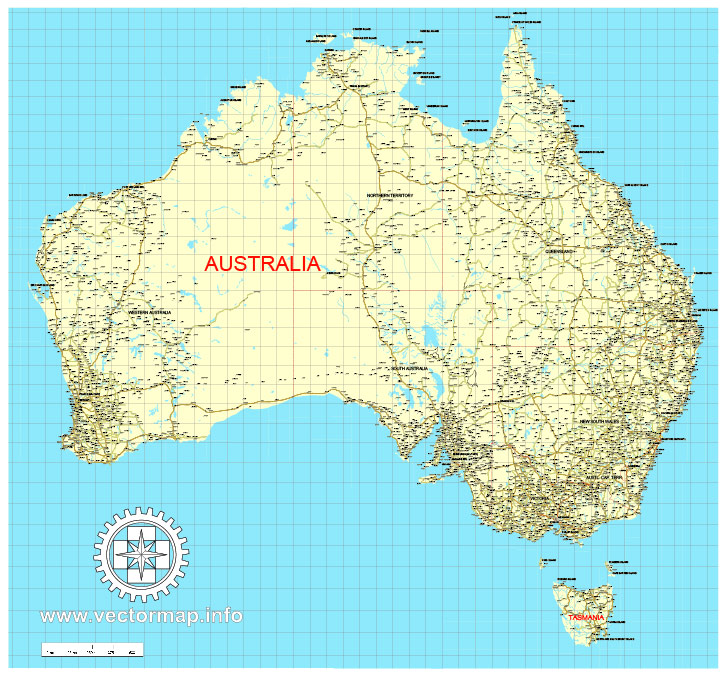
Small guide: How to work with the vector map?
You can: Mass select objects by type and color – for example, the objects type “building” (they are usually dark gray) – and remove them from the map, if you do not need them in your print or design project. You can also easily change the thickness of lines (streets), just bulk selection the road by the line color.
The streets are separated by type, for example, type “residential road” are usually white with a gray stroke. Highway usually orange with a brown or dark gray stroke.
It is easy to change the font of inscriptions, all or each individually. Also, just can be make and any other manipulation of objects on the vector map in Adobe illustrator format.
Important: All the proportions on the map are true, that is, the relative sizes of the objects are true, because Map is based on an accurate GPS projection, and It transated into the (usual for all) the Mercator projection.
You can easily change the color, stroke and fill of any object on the map, zoom without loss of quality Image Verification.
Select object

Bulk selection the same objects on the vector map

See the bulk selected objects on the vector map

Bulk delete buildungs from the vector map

Select residencial road (small street) on the vector map

Bulk selection the same lines (streets, roads) on the full map

Create fat lines of the streets on the vector maps (bulk action) 1

Create fat lines of the streets on the vector maps (bulk action) 2

Create fat lines of the streets on the vector maps (bulk action) 3

You can easily change the color, stroke and fill of any object on the map, zoom without loss of quality Image Verification.
Author Rating
Aggregate Rating
no rating based on 0 votes
City Map Street Map
Product Name Map Darwin Australia Printable editable City Plan Adobe Illustrator vector
Price
USD 27
Product Availability
Available in Stock


























 Author: Kirill Shrayber, Ph.D.
Author: Kirill Shrayber, Ph.D.